Today, I am going to post my Gyeongbokgung Palace journey story of last Dec.
Actually I felt a bit shame because I’ve never seen inside Gyeongbokgung Palace so far.
I have learned many things about Gyeongbokgung through this trip and I want to share this story.
Hit the road!
* Gwanghwamun subway station(Line#5)
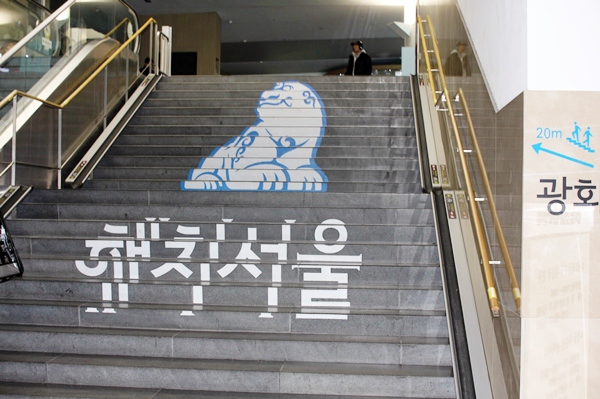
Here’s the Gwanghwamun subway station(Line#5) Exit No.9 .
You can easily get to Gwanghwamun square through this way.
Above funny featured animal is Hachi that is symbolic icon of Seoul today.
Hachi is legendary creature that resembles a lion. Now 2 Hachi sculptures are seated on both sides of Gwanghwamun Gate.
* Gwanghwamun square
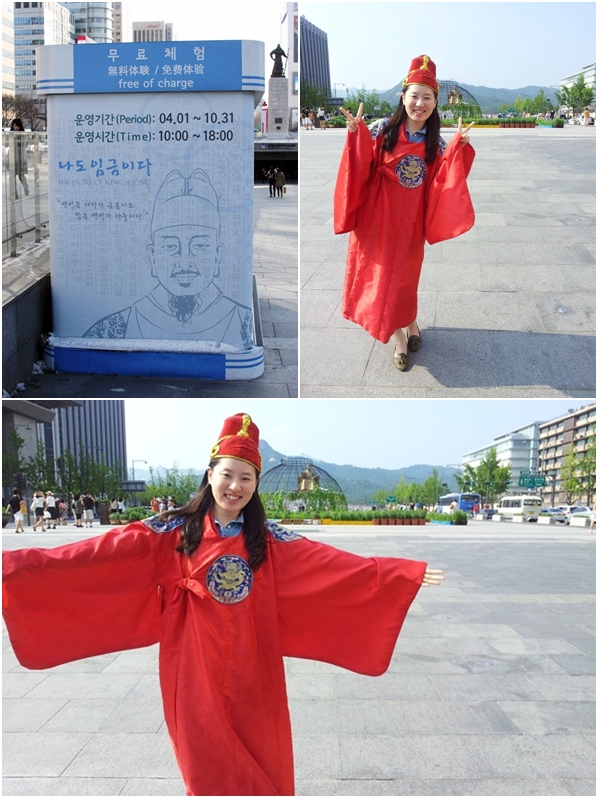
There is event booth that can experience Joseon dynasty customs.
I’ve tried this once in summer 2012. It was big fun experience.
When you come Gwanghwamun square, try it!
Walking along the Gwanghwamun square, you can easily find statue of King Sejong who is a creator of Korean Alphabet “Hangueul” and made a great contributions and big influenced Joseon society in science, technology, agriculture, literature..etc. and Admiral Yi-Sun-Shin who led the Great Battle of Hansan(1592) to succeed during Japanese Invasion of Korea.
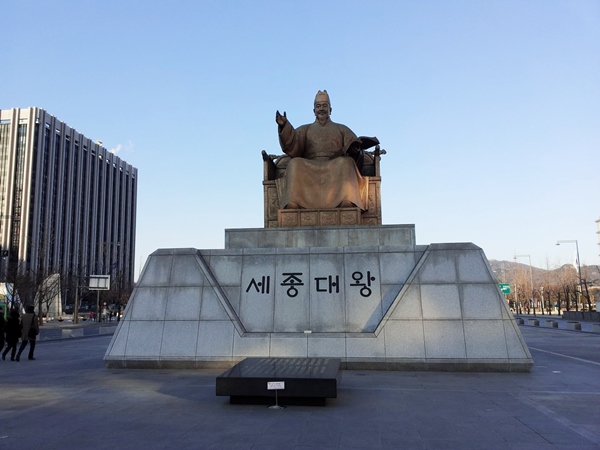
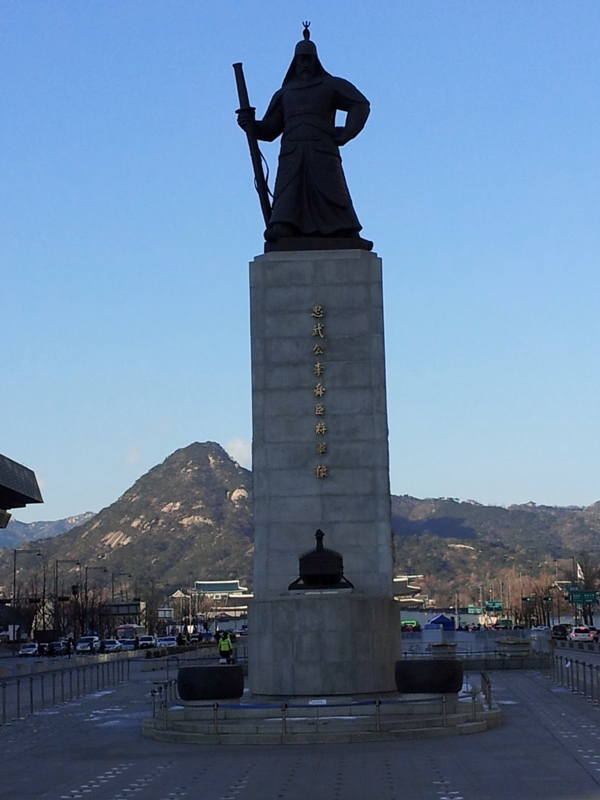
After pass two statues in Gwanghwamun square, you can see Gwanghwamun which is the main gate of Gyeongbokgung Palace.
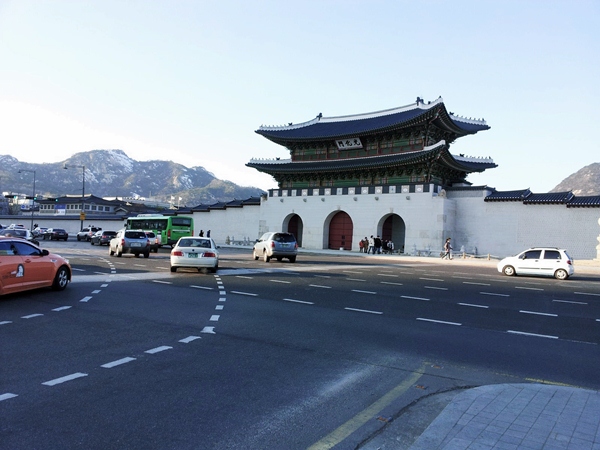
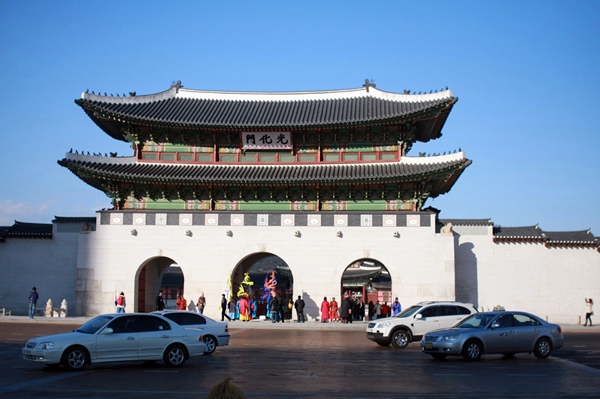
* The Ceremony of Gate Guard Change
I arrived at Gwanghwamun almost 3 pm. I fortunately caught a chance to see the last changing ceremony. Royal Guard Changing ceremony held at Gyeongbokgung Palace 6 times a day from 10:00 to 15:00 at every o’clock except Tuesday.
In Joseon dynasty, the guards kept capital city and the main entrance gate of its royal palaces. The ceremony took place when the opening, closing and shift-time to honor the authority of the ruler and country.
Click below if you’d like to know about more Changing ceremony.
Go to The Ceremony of Gate Guard Change website

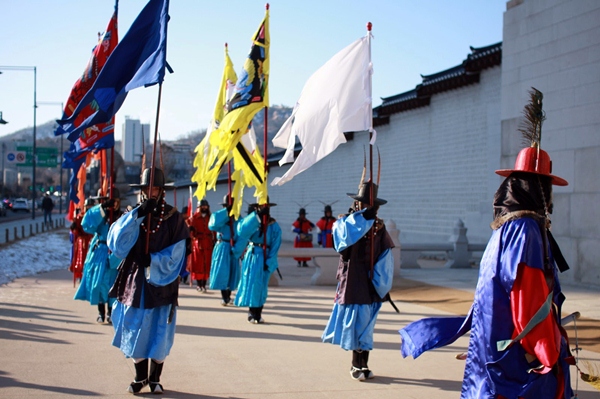
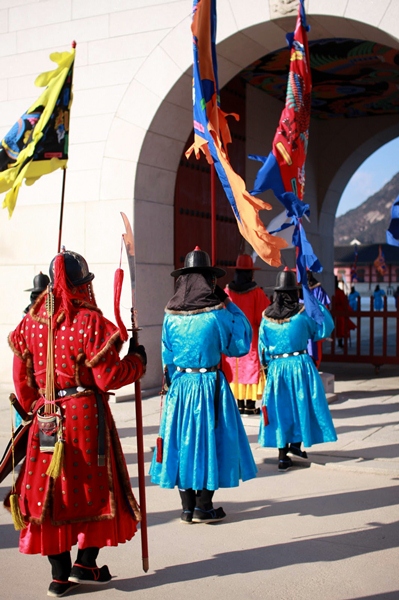
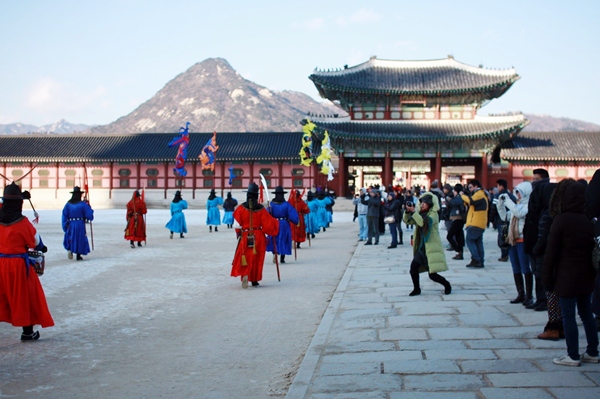
Here’s the Gyeongbokgung information. Refer this!
|
Hour : 09:00~18:00(Final admission at 17:00)
|
|
|
June through August
|
09:00~18:30(Final admission at 17:30)
|
|
November through February
|
09:00~17:00(Final admission at 16:00)
|
|
* Closed on Tuesdays
|
|
|
Admissions
|
|
|
Age 19~
|
KRW3,000/KRW2,400(Group, 10 or more)
|
|
Age 7~18
|
KRW1,500/KRW1,200(Group, 10 or more)
|
You can watch Changing ceremony and Gwanghwamun for free but you need to pay to see whole Gyeongbokgung Palace.

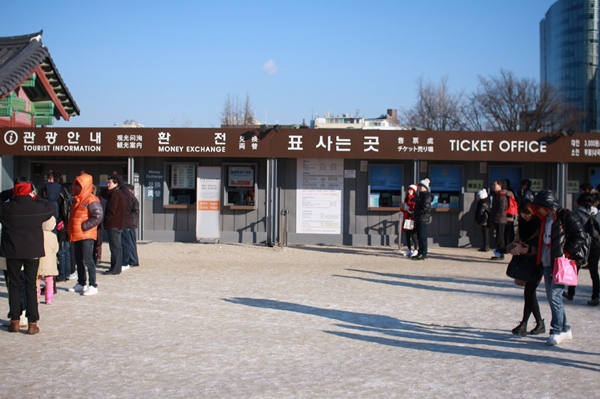
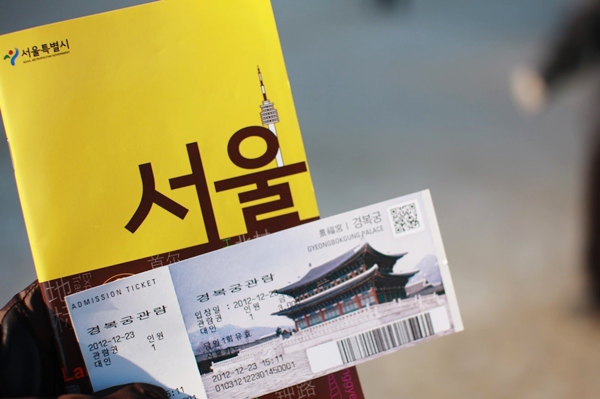
Let’s see inside of Gyeongbokgung Palace.
Oh! Do you know what Gyeongbokgung means?
“Gyeongbok” means that “The new dynasty will be greatly blessed and prosperous” and “gung” means “Palace”.
Gyeongbokgung offer free guide service including Korean, English, Chinese, Japanese . See the schedule picture and don’t miss it.
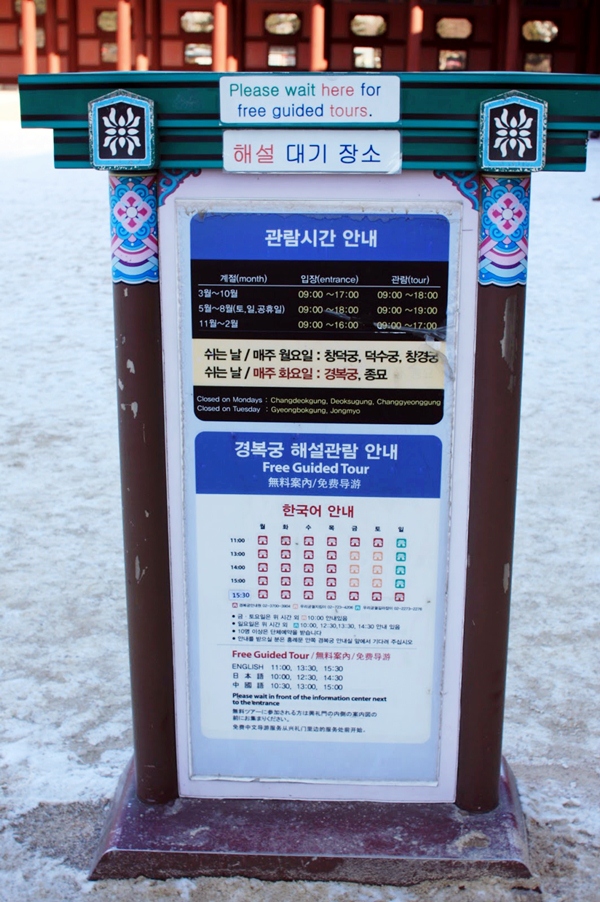
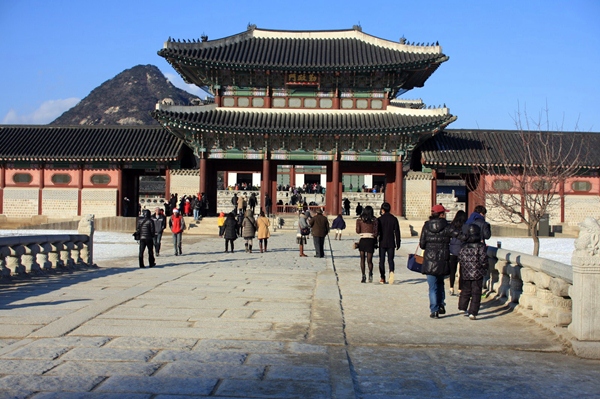
Here’s the Geunjeongmun. It was really freezing day on Christmas-Eve 2012.

I like to take a photo of roof especially Korea traditional building’s roof!
Watching colorful and elaborate roof makes me smile 🙂
You might see many roof pictures on my blogs.
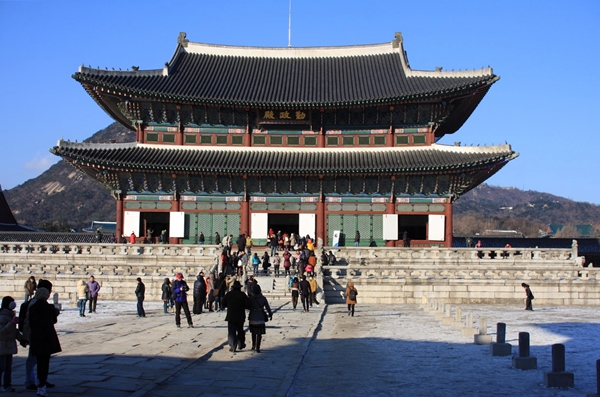
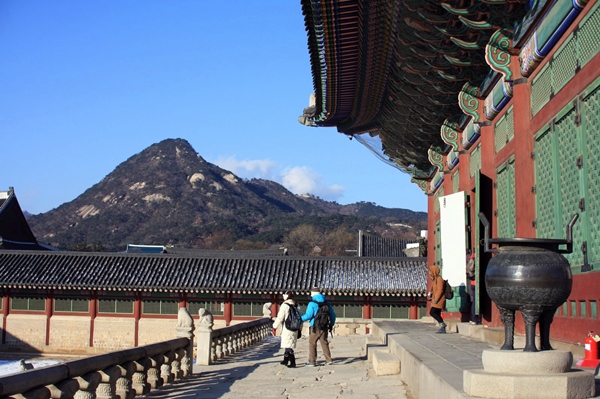
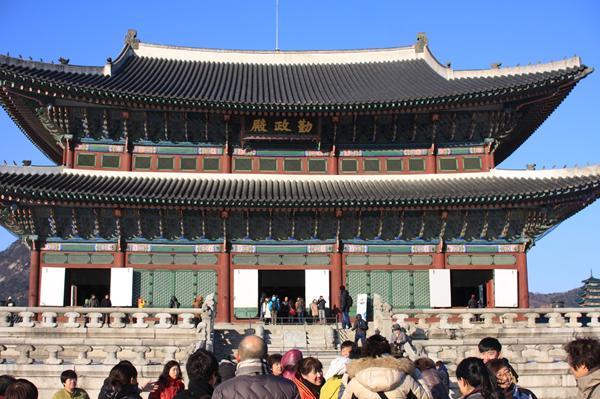
This building is Geunjeongjeon. Geunjeongjeon is the main hall of Gyeongbokgung. This building was used for king’s affairs of state, including meetings, receptions with foreign envoys, and most importantly, the coronation ceremony, were all conducted here.
I’ll give you some tip! Right side corner of Geunjeongjeon is the best spot to be seen beautiful and take a photo. But I couldn’t try it because I found this tip after visiting.
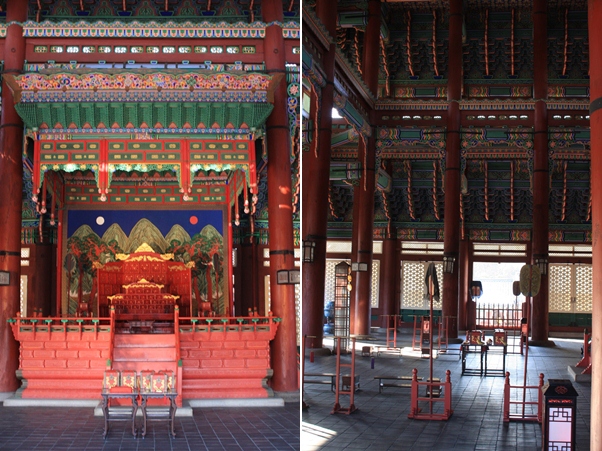
there’s king’s seat inside Geujeongjeon. It’s splendid.

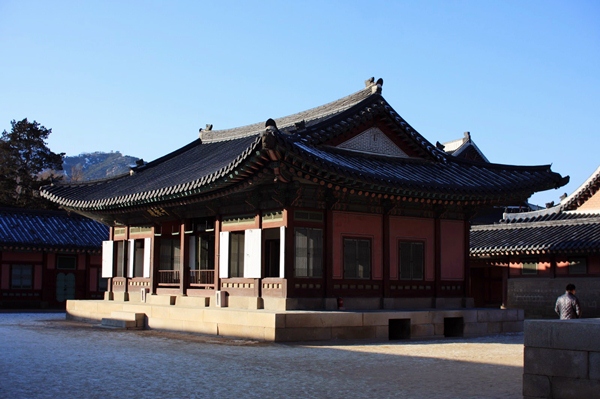
Here is Sajeongjeon. The above picture among 3 of them is Sajeongjeon and other below 2 buildings are the Cheonchujeon and Manchujeon.
The king held daily meetings and seminars every morning on state affairs with his officials in Sajeongjeon.
Cheonchujeon and Manchujeon is kind of auxiliary buildings for the king in chilly weather because there’s no heating system in Sejeongjeon.
So when the weather got cold, the king performed his official duties in the two auxiliary buildings which is equipped with Korean heating system called “Ondol”
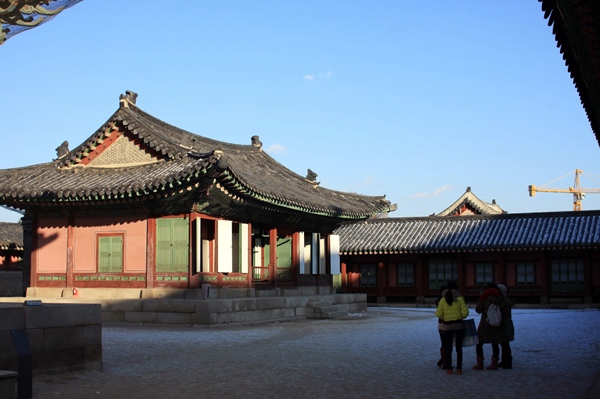
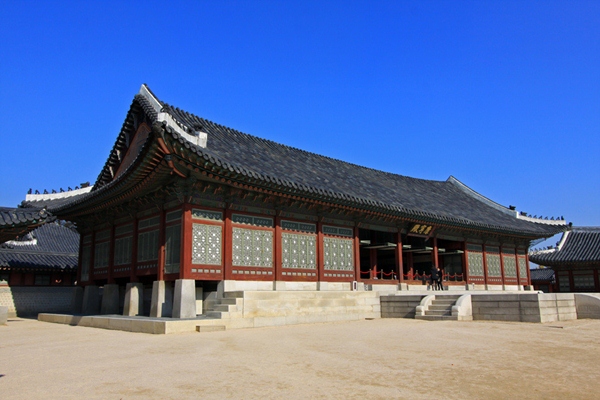
Here is Gangnyeongjeon had a role as the king’s living area. That means the king and queen had a rest and did their duties privately sometimes here. Gangnyeongjeon is divided into 9 sections and arranged in a “井”layout. The center room is exclusively for the king.
Do you see the small things on the roof in Gangnyeongjeon?
Let’s see in detail. See below!


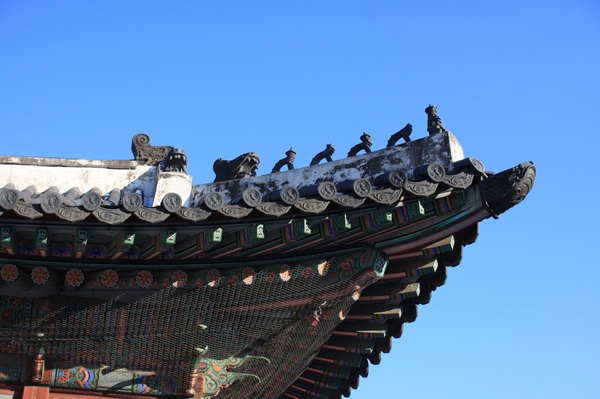
These are called “Japsang”. They had a role as guardians keeping away bad spirits or bad things from the palace especially we can find lots of “Japsang” in Gangnyeongjeon where the king’s residence. They came from the main character Chinese Novel “Seoyugi” and represent monk, monkey, pig….
I like roof picture with blue sky!
There’s Gyotaejeon where the queen’s main residence and located just behind King’s living area but there’s no picture from here because it was sooooo freezing at that time….. 🙁
I’ll post rest of them soon!
Lastly,,,let’s look at the beautiful design and color of Gyeongbokgung!
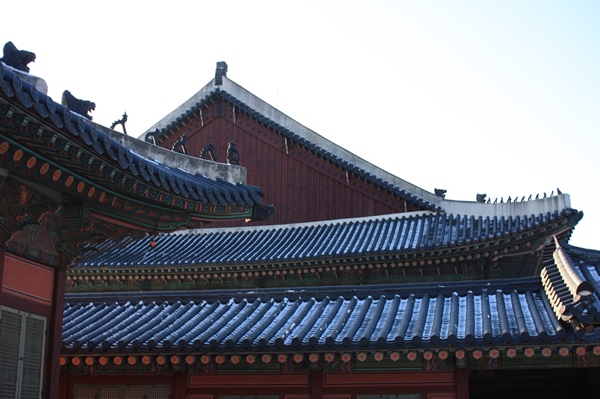
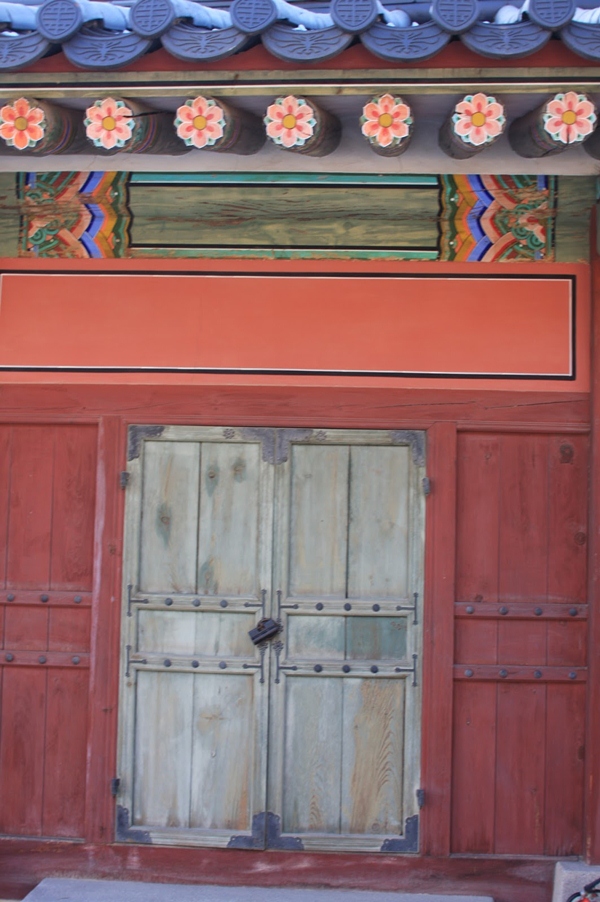
Oh! One more thing! Don’t miss free custom experience. Refer below and be a King of Joseon!!hahaha. It located beside Gunjeonjeon(just beside souvenir shop)
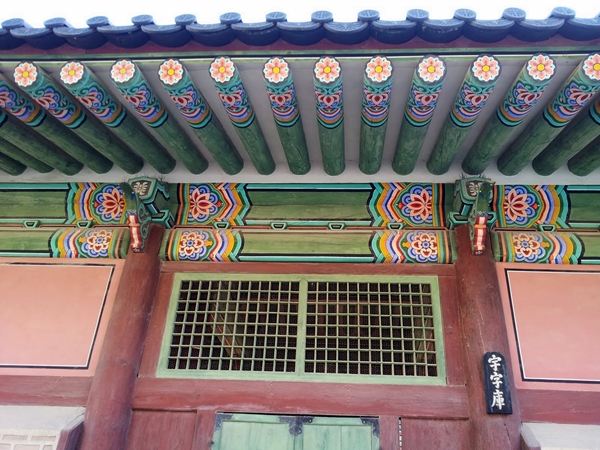


Have a super-duper day! and see ya!:-)


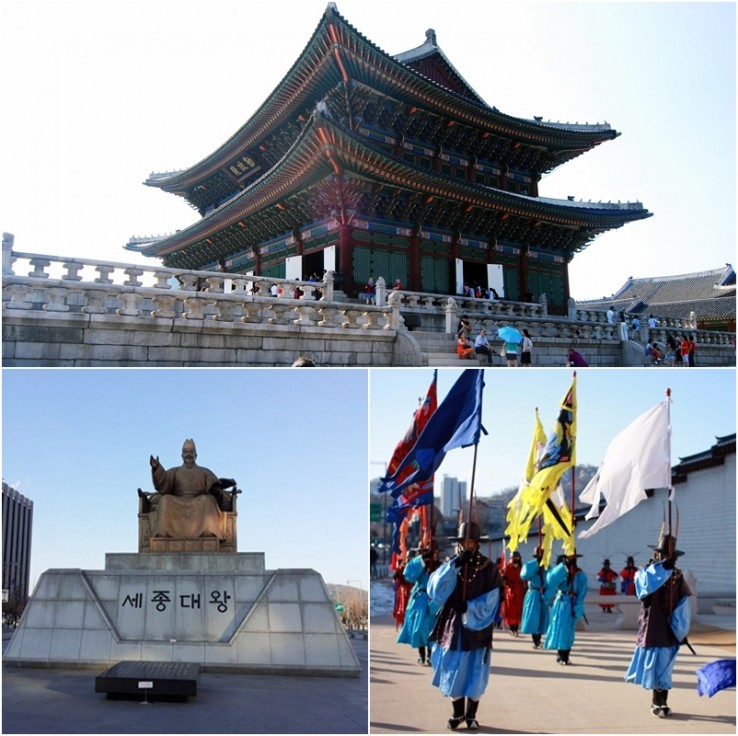
Comments